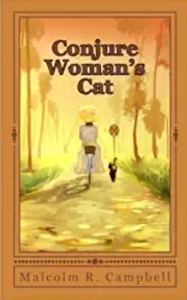Malcolm R. Campbell's Blog, page 68
September 18, 2021
‘Facing the Mountain’ by Daniel James Brown
“The 442nd Infantry Regiment was an infantry regiment of the United States Army. The regiment is best known as the most decorated in U. S. military history and as a fighting unit composed almost entirely of second-generation American soldiers of Japanese ancestry (Nisei) who fought in World War II.” – Wikipedia
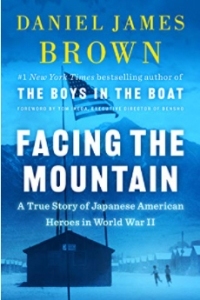 Daniel James Brown’s highly readable, deeply researched, and illustrated with maps and photograps book Facing the Mountain: A True Story of Japanese American Heroes in World War II tells the heartbreaking and glorious story of second generation Japanese Americans who, though reviled by many Americans and thrown into concentration camps by the President while their homes and personal property were confiscated, rose up and did their duty, as they saw it, to become one of the United States’ most effective and feared regiments fighting the Germans. Their motto was “Go for Broke.”
Daniel James Brown’s highly readable, deeply researched, and illustrated with maps and photograps book Facing the Mountain: A True Story of Japanese American Heroes in World War II tells the heartbreaking and glorious story of second generation Japanese Americans who, though reviled by many Americans and thrown into concentration camps by the President while their homes and personal property were confiscated, rose up and did their duty, as they saw it, to become one of the United States’ most effective and feared regiments fighting the Germans. Their motto was “Go for Broke.”
The book is strongly personal because it follows an ensemble cast of characters throughout the shock of the Japanese attack on Pearl Harbor, the ordeal of President Roosevelt’s Executive Order 9066 that relocated without probable cause 120,000 Japanese Americans, 2/3 of whom were native born American citizens, into POW camps, and the decision by over 12,000 of the men to join the Army and fight for their country in spite of that their country had done to them.
From the PublisherThey came from across the continent and Hawai‘i. Their parents taught them to embrace both their Japanese heritage and the ways of America. They faced bigotry, yet they believed in their bright futures as American citizens. But within days of Pearl Harbor, the FBI was ransacking their houses and locking up their fathers. And within months many would themselves be living behind barbed wire.
Facing the Mountain is an unforgettable chronicle of war-time America and the battlefields of Europe. Based on Daniel James Brown’s extensive interviews with the families of the protagonists as well as deep archival research, it portrays the kaleidoscopic journey of four Japanese-American families and their sons, who volunteered for 442nd Regimental Combat Team and were deployed to France, Germany, and Italy, where they were asked to do the near impossible.
But this is more than a war story. Brown also tells the story of these soldiers’ parents, immigrants who were forced to shutter the businesses, surrender their homes, and submit to life in concentration camps on U.S. soil. Woven throughout is the chronicle of a brave young man, one of a cadre of patriotic resisters who stood up against their government in defense of their own rights. Whether fighting on battlefields or in courtrooms, these were Americans under unprecedented strain, doing what Americans do best–striving, resisting, pushing back, rising up, standing on principle, laying down their lives, and enduring.
This story falls into the rather large category of history that most of us did not learn in our high school American history classes. That adds insult to injury. In one sense, Brown’s book is an apolgy. In another sense, it sets the record straight for all who will listen.
September 15, 2021
stormy weather, keeps raining all the time
What do you make of this?
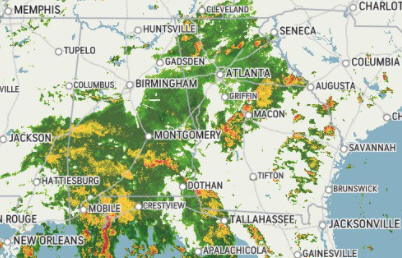
What you see here on RADAR is the remains of hurricane (briefly) Nicholas. They’re like the haint that won’t go away. Ida haunted people all the way up into New England. At present, Nicholas appears to be heading more or less north. Is there a reason for this?
Those with PhDs in stormy weather can show you on a weather map how so-called “global winds” determine the route of a hurricane (or its remains). The models seldom agree 100%, so we tend to see hurricane path maps as a bunch of spaghetti–a twisted mass of potential routes.
My view, which isn’t accepted by anybody other than those who are considered kinky, is that the storms’ paths are determined by the people who want to experience them. Obviously, credible meteorologists don’t include the human equation when considering where a storm will go next. Global winds, though, aren’t the whole story when you exclude people–en masse–who want or need a storm. That is to say, they call it into their neighborhood.
Why would they do that? Excitement, getting out of stuff, pitting oneself against the elements, doing heroic deeds, increasing one’s supply of “war stories,” mind-bending highs, living on the edge. Most of that is subconscious, so people can claim they don’t know anything about it and, yes, act offended when anyone suggests the storms go where they are most wanted.
What others believe about storms doesn’t bother me. That is to say, I have no agenda insofar as enlarging the scope of what meteorologists consider in their metrics. And yet, if you secretly enjoy the thrill of storms, then perhaps you know that you and others like you created that reality on your doorstep.
Gosh, is that crazy or what?
–Malcolm
Publisher: Thomas-Jacob Publishing
September 14, 2021
Phoebe Snow Rode the Rails in a White Dress
One of the more inventive advertising campaigns at the beginning of the 1900s was the Phoebe Snow promotion by the Delaware, Lackawanna and Western Railroad to promote its use of anthracite coal. This is top grade coal and burnt cleaner in steam locomotices than bituminous coal. In the days of steam locomotives, one problem was the cinders that trailed behind the locomotive and flowed in through passenger car windows soiling clothes and sometimes starting fires.
This happened less often with anthracite coal. The railroad, which ran in New York, New Jersey, and Pennsylvania until Conrail absorbed it in 1976, had a nearby source of anthracite coal. This meant that using a campaign character who rode the rails in a white dress was made to order.

Elmo Calkins created the campaign and its fictional character who was portrayed as a socialite who frequently rode between New York and Buffalo in a white dress and a violet corsage became, according to Wikipedia, “one of the most recognized advertising mascots in the United States, and in further campaigns she began to enjoy all the benefits offered by DL&W: gourmet food, courteous attendants, an observation deck, even onboard electric lights”
Says Phoebe Snow
about to go
upon a trip to Buffalo
“My gown stays white
from morn till night
Upon the Road of Anthracite”
–
Now Phoebe may
by night or day
enjoy her book upon the way
Electric light
dispels the night
Upon the Road of Anthracite
Later the railroad would bestow the name Phoebe Snow on one of its trains, and the singer Phoebe Snow would take her her stage name from the railroad’s advertising character.
A glance through railroad history books shows that during the days of privately owned (pre-AMTRAK) passenger service, advertising was a competitive art.
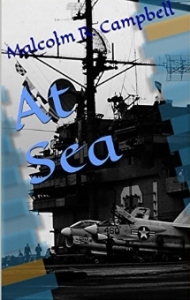 In the 1990s, Campbell served as the collections manager, researcher, and grant writer for a railroad museum in Georgia. Unsurprisingngly, his fiction–such as “At Sea” often includes railroads.
In the 1990s, Campbell served as the collections manager, researcher, and grant writer for a railroad museum in Georgia. Unsurprisingngly, his fiction–such as “At Sea” often includes railroads.
September 13, 2021
Our sick cat: she got better
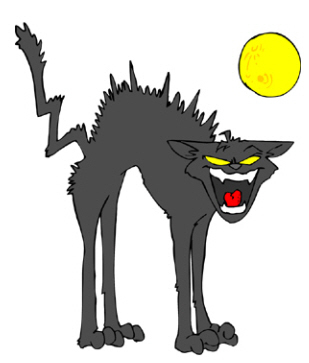 A while ago, I wrote a post about the day every pet owner dreads, the day your pet leaves you. I was thinking of our 18-year-old female cat, Marlo, who has had inoperable cancer for quite a while. Nothing we can go about it. Then suddenly, she got worse. No apparent pain, just a near total collapse. I’ll spare you the graphic details.
A while ago, I wrote a post about the day every pet owner dreads, the day your pet leaves you. I was thinking of our 18-year-old female cat, Marlo, who has had inoperable cancer for quite a while. Nothing we can go about it. Then suddenly, she got worse. No apparent pain, just a near total collapse. I’ll spare you the graphic details.
She became thin as a ghost. Could hardly walk. Slept a lot. We had meds to ease pain, but she didn’t have any. So the meds relaxed her, something she needed when she got hyper
We weren’t ready for her to go. One is never ready. When her condition got out of hand, we talked about putting her down, something we’re generally opposed to doing, yet decided perhaps we’d take her to the vet the following day. But then we didn’t.
And she got better. Started eating again. Drinking more water. Walking without staggering. Eyes bright and focused. We were stunned. Once false move, and we’d jinx it, we thought. And yet, for reasons we may never know, she’s moving well (and fast, too), dozing in one lap or another while we’re watching TV, and hanging out at her familiar places throughout the house.
She’s really hungry. I’m not surprised. She needs to put on weight.
So, what happened?
I don’t have a clue. A random prayer, perhaps. Or maybe she just changed her mind, figuring she had a lot of mischief left to cause. Yes, that’s probably what happened.
–Malcolm
September 11, 2021
We lost the brief love and unity our nation felt on 9/12/2001
 Wikipedia
Wikipedia
The days that followed, much like the days after Kennedy’s assassination, were days of communal grief and processing. Let it be noted – it is important that this be noted – that in those first days after the attack, unlike the ugliness of the military misadventures that have come to mark America’s official response to that day over the last twenty years, the people of the United States were beautiful. In our heartbreak and horror people were vulnerable, actually, and open. – Marianne Williamson
When a family experiences a tragedy, they draw together and support each other and console each other with love and compassion that they may feel uncomfortable displaying on normal days. So, too, a town wiped out by a flood or a tornado or a nation hit with a terrorist attack that takes nearly 3,000 lives.
Those feelings of national unity and concern for each other didn’t last. We lost our chance to keep that focus during the last 20 years. Now we find ourselves in a polarized nation where the default response to the smallest of things is often uncvilized hatred.
“Hey, there’s an old lady without a mask; let’s beat the shit out of her.”
“What do you mean I can’t come in your store without a mask? I’ll be back tonight to torch the dump, teach you a lesson you son of a bitch.”
I guess if one feels righteous enough, they can be immature.
Some of you will disagree, but I place a substantial amount of the blame for today’s polarization and uncivilized behavior at the foot of the U. S. Government. In my view, its response to 9/11 was about as inept as its response to leaving Afganistan. The so-called “Patriot acts” are an example. When a government spies on its own citizens, what kind of result should it expect? We can’t even get on an airplane without being searched. So much for probable cause.
The remains of our country’s once great news media have taken chaos and turned it into biased reporting, and that includes both CNN and Fox news. Both networks highlight divisiveness because it’s good for the ratings even thought it harms the country.
So today, while I will not forget 9/11, I also will not forget the unity and compassion of 9/12. We lost 3,000 innocent people on 9/11/2001 and then in the years that followed, we lost our national soul. Two paths diverged in a wood, and we took the low road, the one that’s killing everyone who survived 9/11. Today I wish we could, as a nation, look at how things anded up and resolve never to allow them to end up that way again.
I don’t think we will, but I can hope.
September 10, 2021
Women’s prize for fiction goes to Susanna Clarke’s ‘mind-bending’ ‘Piranesi’
 Susanna Clarke, who published her debut novel Jonathan Strange & Mr Norrell 17 years ago and then was struck down with chronic illness, has won the Women’s prize for fiction for her second, Piranesi. Narrated by its eponymous hero as he explores the endless halls of a house that imprisons an ocean, Piranesi is “a truly original, unexpected flight of fancy which melds genres and challenges preconceptions about what books should be,” according to the Women’s prize chair of judges, Booker-winning novelist Bernardine Evaristo.
Susanna Clarke, who published her debut novel Jonathan Strange & Mr Norrell 17 years ago and then was struck down with chronic illness, has won the Women’s prize for fiction for her second, Piranesi. Narrated by its eponymous hero as he explores the endless halls of a house that imprisons an ocean, Piranesi is “a truly original, unexpected flight of fancy which melds genres and challenges preconceptions about what books should be,” according to the Women’s prize chair of judges, Booker-winning novelist Bernardine Evaristo.
When I reviewed this book on this blog a year ago, I have the novel five stars, concluding, “For those who don’t require fire-breathing dragons or the snap of lethal energies flung from the hands of protagonists and antagonists in epic battles, this book is a treasure to be savoured like fine wine.”
This is one of the most creative books I’ve ever read and a worthy follow-up to Jonathan Strange & Mr Norrell. Clarke became ill after finishing her first novel and never thought she’d recover enough to write this one 17 years later. I’m pleased that she was able to complete it and happy about today’s news about the prize.
–Malcolm
September 9, 2021
Briefly Noted: ‘Getting Around in Glacier National Park’ by Mike Butler
Mike Butler, who drove one of Glacier’s iconic red busses some years ago, has put together a compelling book about the park’s transportation history in the “America Through Time” series from Arcadia Publishing. Like most Arcadia authors, Butler has included a wealth of spectacular photographs: definitely a high point of the 128-page book that was released in Febuary.
From the Publisher
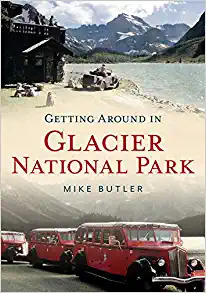 “Getting around in Glacier National Park was quite difficult for early travelers seeking to experience its towering mountains, deep glacial valleys, and extensive lakes. With Glacier’s location in the far northwestern corner of Montana, just getting to the park when it was formed in 1910 was a challenge for travelers. To meet this challenge, the Great Northern Railway brought early tourists to this remote location, transporting visitors to its East Glacier and West Glacier stations. From these entry stations, tour buses took passengers to majestic hotels which the Railway built at East Glacier, Many Glacier, and Waterton Lakes. Visitors seeking adventure within the park could then take horseback trips from the hotels to remote chalets, also built by the Railway. Boats plied the waters of Glacier’s lakes, taking tourists to chalets and hiking trails. Over 900 miles of trails were built across the park. Finally, as automobile travel gained in popularity, the magnificent Going-to-the-Sun Road was completed across the Continental Divide at Logan Pass in 1933.”
“Getting around in Glacier National Park was quite difficult for early travelers seeking to experience its towering mountains, deep glacial valleys, and extensive lakes. With Glacier’s location in the far northwestern corner of Montana, just getting to the park when it was formed in 1910 was a challenge for travelers. To meet this challenge, the Great Northern Railway brought early tourists to this remote location, transporting visitors to its East Glacier and West Glacier stations. From these entry stations, tour buses took passengers to majestic hotels which the Railway built at East Glacier, Many Glacier, and Waterton Lakes. Visitors seeking adventure within the park could then take horseback trips from the hotels to remote chalets, also built by the Railway. Boats plied the waters of Glacier’s lakes, taking tourists to chalets and hiking trails. Over 900 miles of trails were built across the park. Finally, as automobile travel gained in popularity, the magnificent Going-to-the-Sun Road was completed across the Continental Divide at Logan Pass in 1933.”
In his review in the Glacier Park Foundation’s newsletter, Mac Willemssen said, “The book’s chapters describe the development of the railroad, the roads, the boats, the buses, the trails, and the hotels. As such, it’s a great complement to anyone’s Glacier library. It’s very readable and easily puts the reader right in Glacier, whether in a bus, a boat, or on a trail.”
Butler is also the author of five other Arcadia titles: Around the Spanish Peaks; Great Sand Dunes National Park; Southern Colorado: O.T. Davis Collection; Littleton; and High Road to Taos. His brother David is the author of the 2014 Arcadia book Fire Lookouts of Glacier National Park.
In the Daily Interlake’s February review, Carol Marino wrote, “Getting Around in Glacier National Park is packed with historical details and over 150 photos of the park’s early years. It offers such rare glimpses into the park’s pictorial history, such as explorer George Bird Grinnell standing on a glacier in 1926 with his wife Elizabeth Grinnell. Both he and James J. Hill played a pivotal role in the establishment of Glacier Park.”
If you love Glacier National Park, this volume is a treasure.
–Malcolm
September 7, 2021
I have nothing to say
Yes, I can hear the clowns in the back row whispering, “Yay, the old duffer’s finally going to shut up.”
Not happening.
Yet, there are days when a writer is stuck in pure nothingness, a place where–counterintuitively–there is room for everything. And that’s the problem. Like many, I’m overwhelmed by the scope of everthing. Everything has simply become too large and that tends to make us feel too small. One can hide from the size of everything and how small s/he feels by talking constantly or running off at the thunbs, i.e., texting.
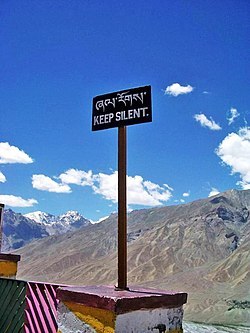 I’d rather just be quiet and think of nothing. When I clear my mind and think of nothing, I begin to relax, to go with the flow (as we used to say), and soon I am coping with everything without the angst and the smallness that usually go with it (everything). I’m amazed at how few people have discovered silence, or how wonderful it feels when you feel no need to fill that silence with talking.
I’d rather just be quiet and think of nothing. When I clear my mind and think of nothing, I begin to relax, to go with the flow (as we used to say), and soon I am coping with everything without the angst and the smallness that usually go with it (everything). I’m amazed at how few people have discovered silence, or how wonderful it feels when you feel no need to fill that silence with talking.
And, as we see, the old song is right, that people are talking without speaking and hearing without listening, so I have come to believe that silence is safer and more sane and a more effective method of coping with everything on our figuratively plates than talking/texting ourselves into oblivion (real or imagined).
There are days, and this is one of them, where I think those who follow this blog will be better off keeping quiet rather than contemplating anything I could possibly say there.
As an older generation read in Desiderata, “GO PLACIDLY amid the noise and the haste, and remember what peace there may be in silence.”
September 6, 2021
Glacier Park Hiking -be aware of the dangers before you start
The news that solo hiker Jennifer Coleman was found dead near Glacier Park’s Logan Pass after being reported missing two days earlier comes as a shock and reminds all of us who love the park’s pristine beauty that in spite of visitor overcrowding, the beautiful mountainn world is a a dangerous place.
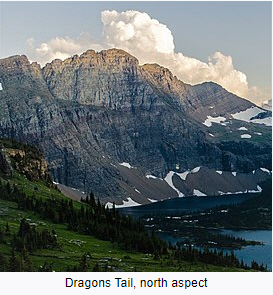 Wikipedia photo
Wikipedia photo
I made it a policy to never climb alone in the park and, other than two-to-three mile strolls around Many Glacier Hotel, never to hike alone. Too much can go wrong, from illness, to falls, to bears and mountain lions. Even a sprained ankle can put a person down on a seldom-travelled trail with no way to get help where there’s no cellphone service.
Coleman’s death is under investigation. Even the precise location hasn’t been released, though there’s speculation she was hiking along the Highline Trail or the Dragon’s Tail. The highline is filled with hikers, yet if one fell when nobody else was nearby, they might land in an out-of-view spot. The Dragon’s Tail has fewer visitors and this makes hiking alone there more dangerous.
As for Coleman, all we know is that she was near Logan Pass and was apparently hiking or climbing alone. The peace of the mountains and the lure of wondrous views is addictive and hard to resist. So, I cannot fault her solo hiking. I might have done it even though I knew I shouldn’t. I’ve climbed a lot of mountains and would probably assume I was imune to the potential dangers.
Matches, maps, bear spray, water, food, and a hiking partner are always the safer way to proceed. We know this, but we don’t always do this.
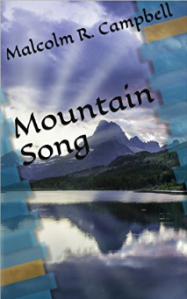 Malcolm R. Campbell has written fiction and nonfiction about Glacier National Park. including the novel “Mountain Song.”
Malcolm R. Campbell has written fiction and nonfiction about Glacier National Park. including the novel “Mountain Song.”
September 5, 2021
Search for Missing Visitor Near Logan Pass Underway UPDATE
NPS Glacier News Release
WEST GLACIER, Mont. [September 3, 2021] – Search efforts are underway in Glacier National Park for Jennifer Lee Coleman, a 34-year-old Virginia resident.Coleman was supposed to check out of the West Glacier KOA on Tuesday, August 31 and was believed to be hiking around Logan Pass on August 30th or 31st. An extended team of ground searchers will continue searching today in cooperation with Flathead County Search and Rescue, Two Bear Air Rescue, Flathead County Sherriff’s Department, and the Flathead National Forest.
Coleman is 5 feet, 6 inches tall and approximately 128 pounds with blond hair and blue eyes. She is possibly wearing a tank top, spandex pants, sunglasses, brown slip-on two toned boots, a turquoise and pink flower scarf, and a dark colored day pack.
Coleman’s last known itinerary is believed to be hiking solo on Monday, August 30 possibly to the Dragon’s Tail or Highline Trail. Her vehicle has been located at Logan Pass.
Anyone that may have information or was in the area and saw an individual that fits the description is encouraged to contact the park tip line at 406-888-7077.
–
The following information comes from the AWARE Foundation:

GREAT FALLS — The body of Jennifer Coleman, who was reported missing on Wednesday, September 1, was found in Glacier National Park on Sunday.
Park officials said in a news release that Coleman’s body was found in a steep and rocky area near the Continental Divide. Coleman’s family has been notified.
The cause of her death is being investigated.

